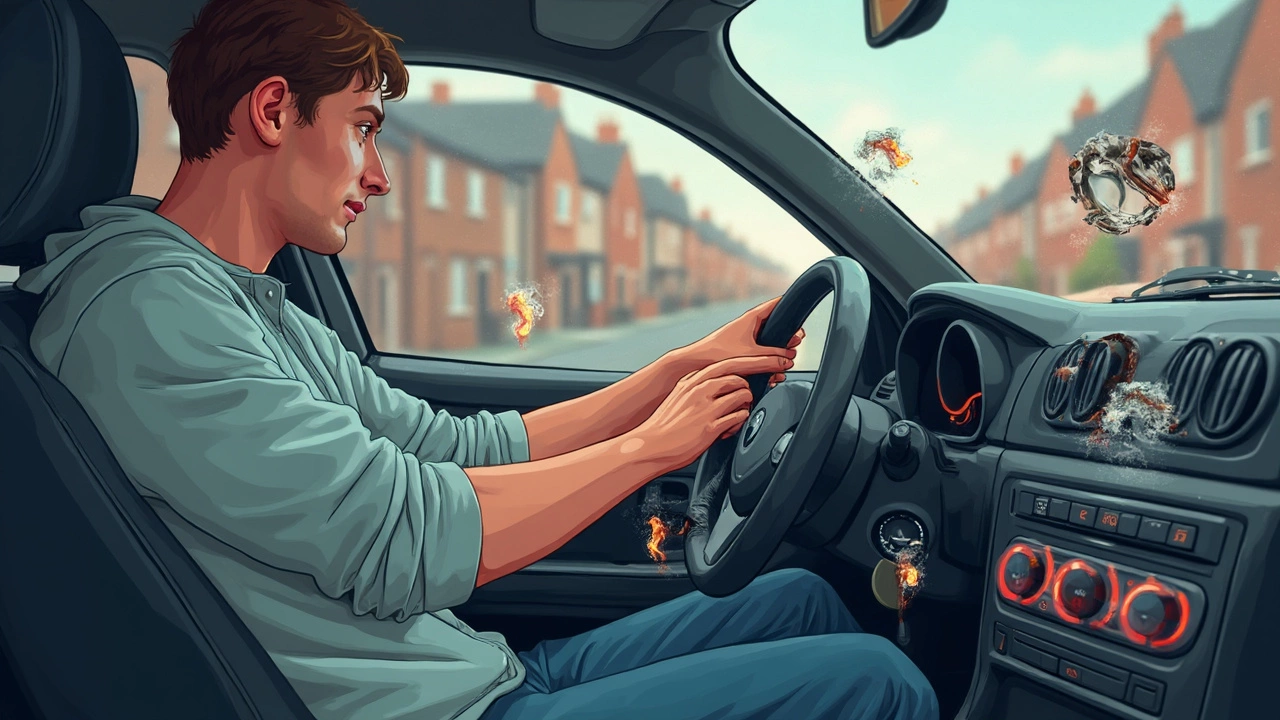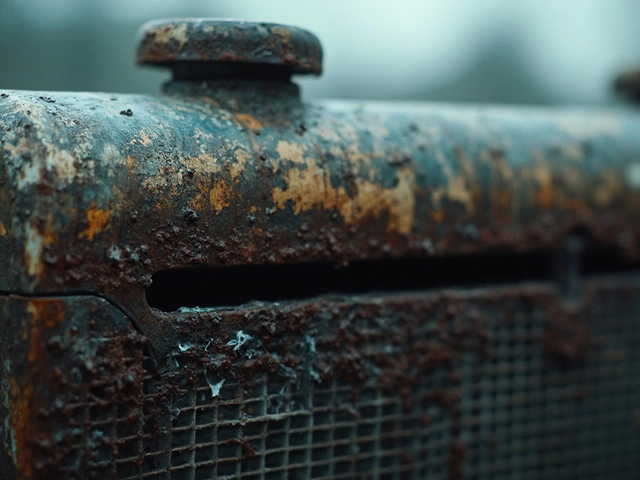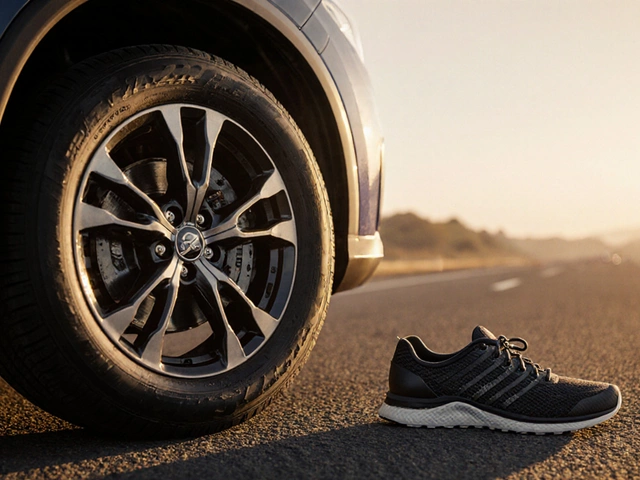A clutch going bad never sneaks up quietly. You’ll notice something feels off before it completely gives out, but you’ve got to know what to listen and look for. Ever pushed the pedal and felt it mushy or had trouble shifting gears? Or maybe your car revs up but doesn’t accelerate like it used to. These red flags are never just ‘quirks’—they’re usually screaming for a clutch check.
Don’t just wait for a tow truck day from hell. People sometimes mistake other transmission problems for clutch trouble, and vice versa. Knowing the difference can save you cash and headaches. Keep reading and you’ll learn the classic clutch warning signs, how to double-check them yourself, and whether it’s safe to squeeze out a few more miles—or if your car’s just begging for a new clutch kit.
- The Early Warning Signs
- Clutch Problems vs. Transmission Issues
- Everyday Habits That Wreck Your Clutch
- DIY Checks and When to Call a Pro
- What Happens If You Wait Too Long
The Early Warning Signs
So, how do you really know if your clutch kit is throwing in the towel? There are some classic symptoms you just can’t ignore. One of the big ones is when the engine revs like you’re in a race, but your car barely speeds up. That’s called clutch slip, and it’s probably the most obvious clue that your clutch is on its last legs.
Another dead giveaway is trouble getting into gear, especially first or reverse. If you’ve got to really force the shifter, or if you hear grinding, your clutch might not be disengaging properly. Also, feel out the pedal—it shouldn’t be super mushy or stiff like a brick. Anything that feels different from normal is worth paying attention to. And if you smell something burnt after parking, that could be the clutch cooking itself.
- Soft or spongy clutch pedal: Indicates worn components or air in the hydraulic line.
- Hard or sticky pedal: Can mean cable issues or failing master/slave cylinder.
- Unusual noises: Squealing or growling when you press the pedal? That’s bad news—think worn bearings or a failing clutch kit.
- Chattering or vibration during takeoff: Usually means warped clutch parts or contamination (like leaking oil).
Just to show how common these issues are, check this out:
| Clutch Symptom | Reported by Drivers (%) |
|---|---|
| Slipping | 41 |
| Difficulty Shifting | 33 |
| Strange Noises | 16 |
| Burning Smell | 10 |
If any of these things are bugging you, don’t just hope they’ll go away. These early warning signs mean it’s time to seriously think about a clutch replacement before the thing leaves you stranded. Catching the problem now can save you big money compared to waiting for a total breakdown.
Clutch Problems vs. Transmission Issues
It’s really easy to mix up clutch kit issues with bigger, scarier transmission problems—especially if your car is acting up. But the fixes and costs are miles apart, so let’s clear things up.
Clutch problems mostly show up when you go to shift gears. For manual transmissions, if you hear grinding, slipping, or feel the pedal gets super stiff or drops to the floor, it’s usually the clutch kit at fault. Symptoms like these are clutch classics:
- Pedal feels strange—either super loose or ridiculously hard to press
- Engine revs climb but the car doesn’t respond (slipping clutch)
- Gear shifts get sticky or impossible
- Burning smell, especially after stop-and-go driving
Now, transmission problems are a bit different. If you notice:
- Loud whining, humming, or clunking noises even in neutral
- Fluids leaking under your car near the middle (usually reddish transmission fluid)
- Complete failure to go into gear at all
- Check engine light with codes for sensors or solenoids
That’s pointing more toward transmission trouble, not just the clutch kit.
Here’s a quick side-by-side breakdown to help sort it all out:
| Symptom | Clutch Issue | Transmission Issue |
|---|---|---|
| Slipping while accelerating | Very likely | Less likely |
| Won’t go into gear at all | Possible if clutch fully failed | Very likely |
| Grinds when shifting | Common | Possible if gears damaged |
| Noises in neutral | Unlikely | Common |
| Fluid puddle under car | Rare (unless hydraulic clutch leak) | Common |
If it’s just the clutch, you’re usually looking at replacing the clutch kit—not cheap, but nowhere near as pricey as a new transmission. Spotting the right problem early means you can avoid throwing your money at the wrong fix.

Everyday Habits That Wreck Your Clutch
Most drivers burn through a clutch kit way sooner than they should, just from how they drive day in and day out. If you want your clutch to last, you have to drop a few bad habits. Let’s call them out one by one, so you can stop doing them before your wallet takes the hit.
- Riding the Clutch: This is a big one. Resting your foot on the clutch pedal, even lightly, keeps the clutch partially engaged. Over time, this wears down the friction material fast. You should really only press the clutch when you’re shifting.
- Holding the Car on a Hill with the Clutch: Some folks use the clutch to keep from rolling backwards at a stop, especially on hills. Just use the brake. Balancing on the clutch causes it to slip against the flywheel, which creates heat and eats away at the clutch surface.
- Launching Hard or Drag Racing Starts: Dropping the clutch at high RPMs for fast starts can seriously cut down the life of your clutch kit. Sure, it’s fun, but your clutch isn’t a racecar part—unless you paid extra for it to be.
- Not Fully Pressing the Clutch Pedal: Shifting gears without pushing the pedal all the way causes grinding and extra stress on the clutch and transmission. Always press the clutch pedal fully when shifting.
- Hauling Extra Weight: Carrying lots of heavy gear, towing a trailer, or loading down your car makes the clutch work a lot harder, especially in stop-and-go traffic. The added strain can cut clutch life in half if you do it often.
To put numbers to it, a clutch kit in a daily-driven manual transmission car might last anywhere from 50,000 to 100,000 miles, but bad habits can chop that lifespan down to under 30,000 miles. Have a look at this quick breakdown:
| Driving Habit | Effect on Clutch Life |
|---|---|
| Good habits (no riding clutch, full disengagement, no heavy hauling) | 75,000–100,000 miles |
| Occasional bad habits (rare hill holding, light hauling) | 40,000–60,000 miles |
| Consistent bad habits (riding, launching, overloaded car) | 15,000–30,000 miles |
So if you want to avoid replacing your clutch kit way too soon, change up the way you drive. It’s not just about saving money—it’s also about keeping your car running smoother, longer.
DIY Checks and When to Call a Pro
If you suspect your clutch kit is on its last legs, there are a few things you can check on your own before making an appointment with your mechanic. None of these require special tools or mechanical genius, just a little patience and attention to what your car is telling you.
- Clutch Pedal Free Play: With the engine off, gently press the clutch pedal. There should be a bit of resistance after a short distance (about half an inch in most cars). Way too much or too little play often means something’s up with the clutch mechanism.
- Gear Shift Test: Try shifting into every gear while the engine runs at idle and the car is stopped. Crunchy, sticky, or grinding shifts are classic signs your clutch kit might be toast.
- Slipping Test: Find a quiet, flat spot. With the car in a higher gear (say, third), press the gas and ease off the clutch slowly. If the engine revs up but the car doesn’t really move, that’s usually clutch slip—and that’s bad news.
- Burning Smell: Ever noticed a funky, burning fabric or rubber smell after driving? That’s often from friction in a dying clutch. If you smell it after simple driving, it’s probably time for a change.
Here’s the thing: diagnosing a clutch kit isn’t rocket science, but replacing it usually is. Clutches sit between your engine and transmission—places you can’t just poke around without a lift and some know-how.
Here are situations when you definitely want to call a pro:
- If you hear high-pitched squeals or grinding from under the car every time you press or release the clutch—this could be a bad release bearing, and that’s not a driveway fix.
- The clutch pedal gets stuck on the floor or you physically can’t shift at all. This almost always means something’s broken inside the clutch or transmission.
- You see leaking fluid near where the engine meets the transmission—hydraulic clutch issues get messy, fast.
A survey in 2023 showed that about 68% of clutch problems caught early could be handled by adjusting or replacing small parts, like cables or cylinders, instead of the whole clutch kit. Waiting too long almost always means a full replacement, which costs way more in the end.
| DIY Check | Result | Action |
|---|---|---|
| Pedal feels normal | Some play, shifts smooth | Clutch probably fine |
| Pedal stiff/stuck | Hard shifts, weird noise | Call a pro |
| Slipping test fails | Revs but doesn’t move | New clutch kit needed |
If you’re in doubt, don’t try to push your luck. Labor costs for clutches are no joke—and driving on a dying one can wreck your flywheel and transmission, turning a $500 repair into a $2000 headache fast.

What Happens If You Wait Too Long
Dragging your feet on getting a new clutch kit isn’t just risky—it can get expensive, fast. When the clutch starts slipping or grinding, it’s already working overtime. If you keep driving, you’re just wearing down other parts around it. For example, a burned-out clutch can mess up the flywheel, pressure plate, and even damage your starter motor from constant cranking. That’s like turning a small leak into a flood—and paying for the repairs to match.
As the clutch deteriorates further, expect:
- Higher risk of total failure (hello, roadside breakdowns).
- Grinding gears and hard shifting, which may eventually kill your gearbox.
- More engine strain, especially when you need power most—like merging on a highway or climbing hills.
- Reduced fuel efficiency thanks to all the wasted engine revving.
If you’re curious about the impact on your wallet, check this out:
| Scenario | Average Cost |
|---|---|
| Standard Clutch Kit Replacement | $900 - $1,400 |
| Clutch + Flywheel + Transmission Damage | $2,000 - $3,500 |
Those numbers can jump higher for certain imports or performance cars. But even on basic rides, ignoring a worn clutch kit just stacks up the costs. And it’s not just about money. If your clutch fails while you’re pulling into traffic, you’re in for a bad day—safety goes straight out the window.
Don’t wait until you’re stranded. Replace that clutch kit at the first real signs of trouble and keep the rest of your manual transmission running strong. It’s an upfront hit, but it saves a world of pain down the road.






